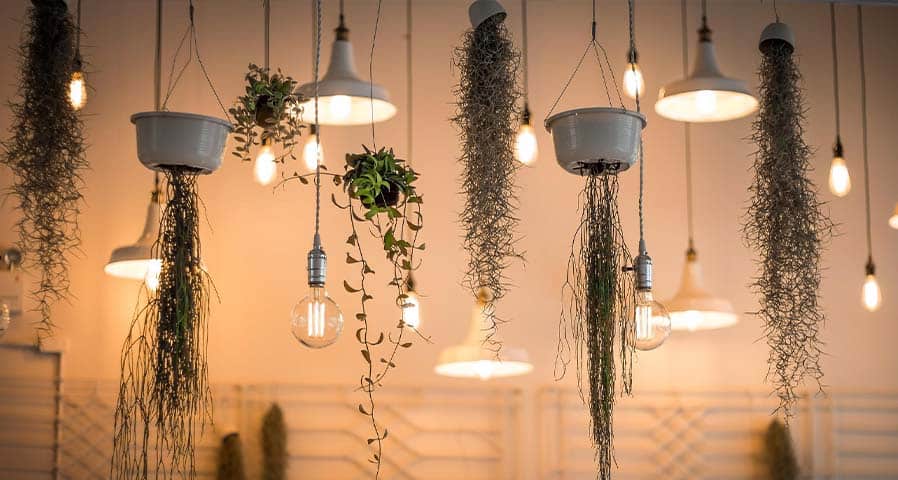How Facility Managers Can Cut Energy Costs Without Sacrificing Performance
Discover how facility managers can cut energy costs effectively to enhance operational efficiency and save resources.

This blog was originally published June 7, 2022 and was updated September 21, 2024.
Lighting technology has evolved significantly, and today, LED and incandescent bulbs are two of the most common options available. Incandescent bulbs represent a traditional choice, while LEDs offer modern, energy-efficient solutions. In this article, we’ll explore the features, advantages, and disadvantages of each type of light bulb, as well as a direct comparison to help you decide which option might be best for your needs.
Incandescent bulbs have been used for decades and are known for their warm, soft glow. They work by passing an electric current through a filament, which heats up to produce light. The filament is housed in a vacuum or inert gas-filled glass bulb, preventing it from burning out too quickly.
One of the leading reasons consumers are drawn to incandescent is they are budget friendly. Incandescent have a lower upfront cost that makes them more affordable compared to other lighting options. In addition to this, they have a high color rendering index, which allows them to provide natural lighting. They also have versatile power usage since they can operate off of AC or DC power and are compatible with some lighting control options, like dimmers.
There are several downsides to incandescent. Although they are a cheaper option, they do not have a long lifespan, with only 1,000 to 1,200 hours. In addition, they consume a lot of energy when creating light. Incandescent lighting converts only about 10% of the energy into visible light, with the remaining 90% lost as heat. These qualities lead to more costs for energy and maintenance in the long term.
Incandescent lighting is omnidirectional, meaning they emit lighting in all directions. This can be a disadvantage when trying to illuminate a specific area, as the light may be less focused and less effective at lighting targeted spaces.
Sustainability has become a national trend, with businesses and states looking for new ways to impose energy-efficient measures. One of these measures is banning incandescent lighting. Since lighting technology is advancing to help conserve energy, legislators are phasing out incandescent lights to push for energy-efficient lighting to be used in homes and businesses. California, Oregon, New York, and Vermont have already begun the process and banned incandescent lighting at a state level.
LED (Light Emitting Diode) lighting is a new lighting technology that operates by passing an electrical current through a semiconductor material, which produces visible light. LEDs are known for their energy efficiency, long lifespan, and versatility, making them a popular choice for both residential and commercial lighting applications.
LEDs are highly energy-efficient, typically converting 80-90% of energy into light, with minimal heat loss. They use significantly less power than incandescent bulbs to produce the same amount of light. This efficiency not only lowers energy bills but also makes LEDs an environmentally friendly lighting option.
Another significant advantage of LEDs is their longevity. This extended lifespan reduces the need for frequent replacements, translating into lower maintenance costs over time. Additionally, LEDs are highly versatile in design, size, and color options, allowing for more creative lighting solutions. Unlike incandescent bulbs, they are naturally directional, meaning they emit light in a focused direction, which makes them ideal for spot lighting and task lighting.
While LEDs offer many benefits, they do have some drawbacks. The initial cost of LED bulbs is higher than incandescent bulbs, which can be a deterrent for consumers looking for a more affordable option upfront. However, financial rebates are available to offset the costs of products and installations. The combination of energy and maintenance savings with financial rebates leads to a long-term ROI to balance out the initial upfront costs.
When evaluating LED and incandescent bulbs side by side, it’s clear that each has its own strengths and weaknesses:
In the debate between LED and incandescent lighting, the choice largely depends on individual needs and preferences. Incandescent bulbs remain a good option for those who value warm lighting and a low initial cost. However, LEDs provide a clear advantage in energy efficiency, lifespan, safety, and versatility, making them a better long-term investment. Although the upfront cost of LEDs is higher, the savings on energy and maintenance can make LEDs the more economical choice in the long run.
Action Services Group can assist you in choosing the right lighting to suit your needs and goals! To speak with one of our specialists, call 610-558-9773, email [email protected], or schedule a call that fits your needs by clicking the button below.